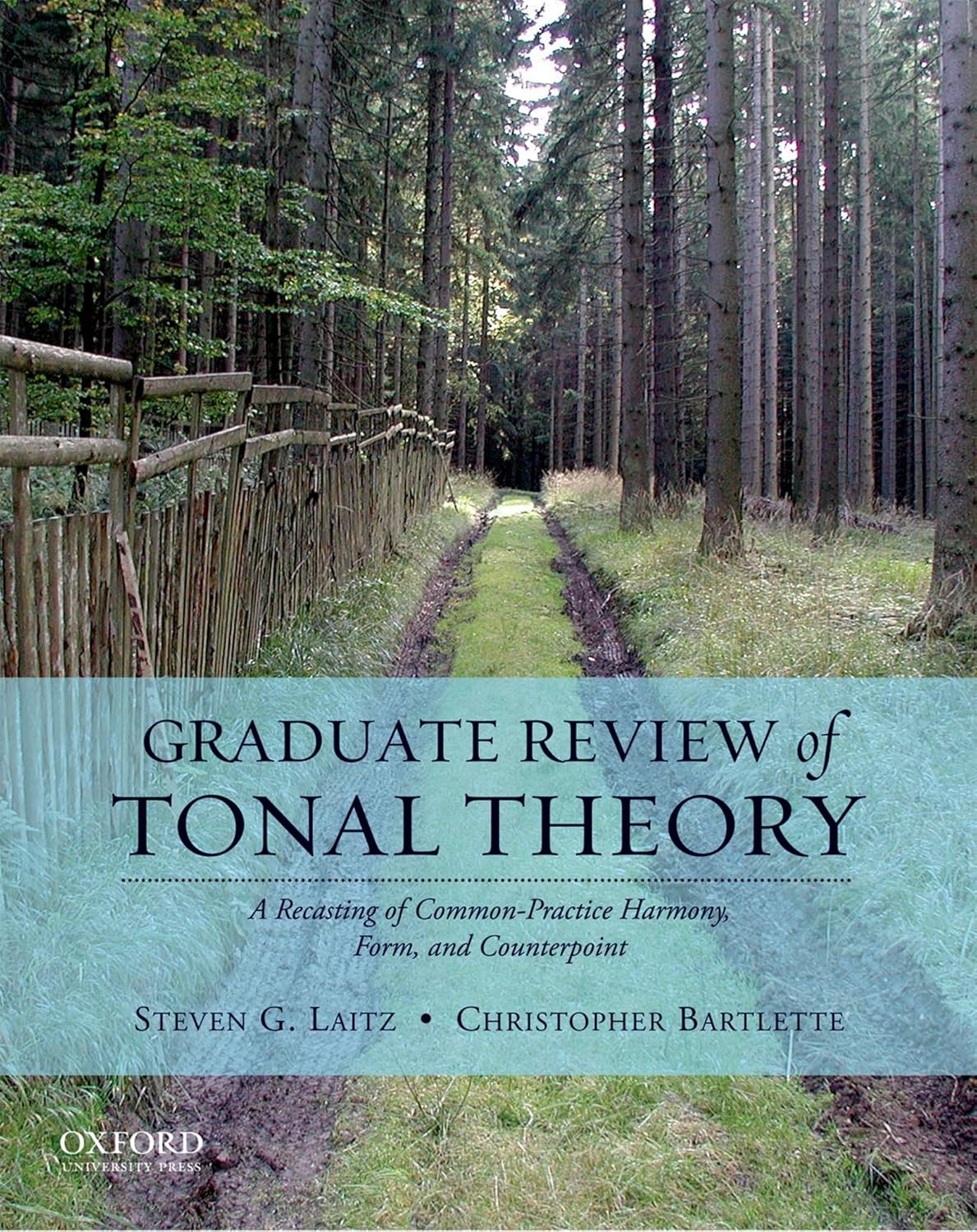
OXFORD UNIVERSITY PRESS - 19
Graduate Review of Tonal Theory
Graduate Review of Tonal Theory
Juilliard Store
144 West 66th Street
New York NY 10023
United States
Choose options
Graduate Review of Tonal Theory
Juilliard Store
144 West 66th Street
New York NY 10023
United States
Graduate Review of Tonal Theory
Juilliard Store
144 West 66th Street
New York NY 10023
United States
by Steven Laitz and Christopher Bartlette
Building on the same pedagogy that informed The Complete Musician, this Graduate Review of Tonal Theory is the first book to review music theory at a level that is sophisticated enough for beginning graduate students. Steven G. Laitz and Christopher Bartlette address students as colleagues, and thoroughly explore appealing and practical analytical applications. The text also provides a means to discuss the perception and cognition, the analysis and performance, and the composition and reception of common-practice tonal music. Marked by clarity and brevity, Graduate Review of Tonal Theory presents crucial concepts and procedures found in the majority of tonal pieces.
Distinctive Features
*Integrates two- to three-page "Analytical Extensions" at the end of each chapter, which introduce an additional topic through one or two works from the repertoire, and then develop the topic in a model analysis
*Synthesizes the essential concepts of music theory and pieces from the repertoire that expand upon and refine the analytical applications taught in the undergraduate theory curriculum
*Includes an in-text DVD with recordings by Eastman students and faculty of musical examples from the text and analytical exercises from the workbook.
Table of Contents:
For the Instructor
Setting the Stage
Introduction
Sample analyses
PART ONE: Contextualizing Theory and Analysis: Fundamentals
Chapter 1: Musical Time and Space
The metrical realm
The pitch realm
Chapter 2: Harnessing Musical Time and Space
Species counterpoint
First-species (1:1) counterpoint
Second-species (2;1) counterpoint
Adding voices: Triads and seventh chords
Musical texture
Chapter 3: Making Choices: When Harmony, Melody, and Rhythm Merge
Tonal hierarchy in music
Tones of figuration
Melodic fluency
PART TWO: Diatonic Harmony: Functions, Expansions, and the Phrase Model
Chapter 4: Composition and Analysis: Using I, V, and V7
Tonic and dominant as tonal pillars and introduction to voice leading
The dominant seventh and chordal dissonance
Analytical extension: The interaction of harmony, melody, meter, and rhythm
Chapter 5: Contrapuntal Expansions of Tonic and Dominant
Contrapuntal expansions with first inversion triads
Contrapuntal expansions with seventh chords
Analytical extension: Invertible counterpoint
Chapter 6: The Pre-Dominant, Phrase Model, and Additional Embellishments
The pre-dominant function
Introduction to the phrase model
Accented and chromatic dissonances
Analytical extension: Revisiting the subdominant
PART THREE: Elaborating the Phrase Model and Combining Phrases
Chapter 7: Six-Four Chords, Non-Dominant Seventh Chords, and Refining the Phrase Model
Six-Four Chords
Summary of contrapuntal expansions
Non-dominant seventh chords:
Embedding the phrase model
Analytical extension: Expanding the pre-dominant
Chapter 8: The Submediant and Mediant Harmonies
Submediant (vi in major; VI in minor)
The step descent in the bass
Mediant (iii in major; III in minor)
General summary of harmonic progression
Analytical extension: The back-relating dominant
Chapter 9: The Period, Double Period, and Sentence
The period
The double period
The sentence
Analytical extension: Modified periods
Chapter 10: Harmonic Sequences: Concepts and Patterns
Components and types of sequences
Sequences with diatonic seventh chords
Writing sequences
Analytical extension: Melodic sequences and compound melody
PART FOUR: Chromaticism and Larger Forms
Chapter 11: Applied Chords and Tonicization
Applied dominant chords
Voice leading for applied dominant chords
Applied leading-tone chords
Extended tonicization
Analytical extension: Sequences with applied chords
Chapter 12: Modulation and Binary Form
Modulation
Binary form
Analytical extension: Binary form and Baroque dance suites
Chapter 13: Expressive Chromaticism: Modal Mixture and Chromatic Modulation
Modal mixture
Plagal motions
Modal mixture, applied chords, and other
chromatic harmonies
Expansion of modal mixture harmonies: Chromatic modulation
Analytical extension: Modal mixture and text-music relations
Chapter 14: The Neapolitan and Augmented Sixth Chords
The Neapolitan chord
The augmented sixth chord
Analytical extension: Prolongation with bII and +6 chords
Augmented sixth chords as part of PD expansions
Chapter 15: Ternary and Sonata Forms
Ternary form
Sonata
Analytical extension: Motivic expansion
Appendix: Additional Formal Procedures
Subphrases and composite phrases
Variation techniques
Ternary form and the nineteenth-century character piece
Rondo
Further characteristics of sonata form
Glossary
Abbreviations and Symbols
Index
